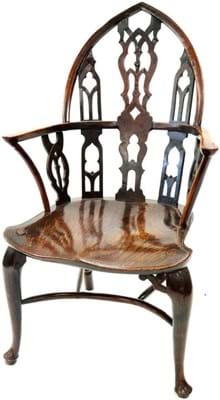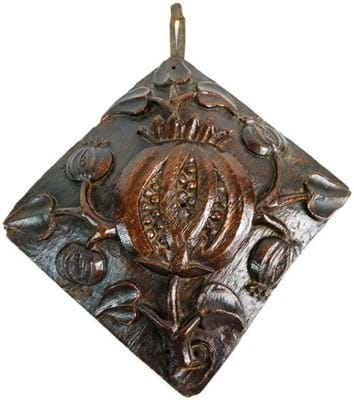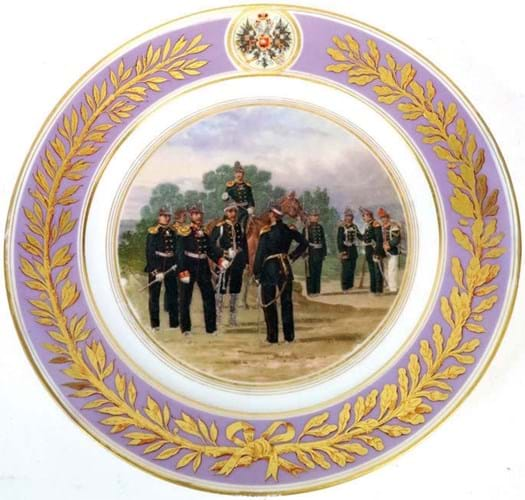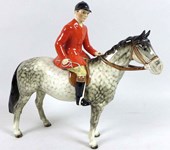Never one for hype, fine art director Lamond said: “It was overall a good sale for the right things and very strong prices for unique and unusual items. The clearance rate for ‘brown furniture’ was nearly 70% which was encouraging and suggested life coming back into this market.”
Best of the furniture on July 17 was a Windsor chair, but an unusual 18th century ‘gothic’ example of a perennially popular item.
It was principally of yew with an elm seat and featured a very rare splat design and of fine colour. “According to some sources it was the best such chair on the market in 20 years,” said Lamond.
Standing 3ft 6in (1.07m) high, the privately entered chair was estimated at £800-1200 and sold to a south of England private buyer at £10,500.
Going at almost as much against a similar estimate was another rarity: a c.1530 English carved oak ceiling boss. Heavily carved with a large central pomegranate – family badge of Catherine of Aragon – the 12in x 11½in (31 x 29cm) boss came with an old label reading: This fine boss carving was formerly in Peterborough Cathedral and was purchased by the great authority on early English oak, Captain Gwen Wheeler, author of the standard work ‘Old English Furniture’, at The Antique Dealers Fair held at Dorchester House, September, October 1934.
According to some sources it was the best such chair on the market in 20 years
The author of the 1924 work was actually G Owen Wheeler but the provenance, on top of the long years the boss had been in a private Shropshire home, was sound and it sold to a Midlands collector at £9500.
Another piece of early oak at the July 17 sale was a carved vernacular oak panel portraying the façade of the prominent Chester building known as God’s Providence House, placed when it was rebuilt in 1652. It took a quadruple-estimate £4600 (News, ATG No 2402).
Best of the ceramics was a 9¼in (23.5cm) diameter plate from the Imperial Porcelain Manufactory, St Petersburg. It portrayed officers and men of the First Imperial Grenadier Guards Division after a painting by Midian and featured the green cypher mark for Czar Alexander II with the title in black Cyrillic script and the date [18] ’71 in black enamel.
Not surprisingly, it raised interest from Russia and went back home at a mid-estimate £4100.
Best of the English ceramics was a garniture of three c.1821-23 Spode beaker match pots. Of trumpet shape and standing from 6¼ to 4½in (16 to 11.5cm) tall, each was applied with bands of beaded white pearls and decorated with panels of brightly painted shells and coral, the reverses gilded with formal grotesque motifs including birds and baskets.
Widely exhibited and documented, the history of the pots included being bought for £27.10s in 1928 and sold at Bonhams’ Trelissick House sale in July 1913 at £4800.
Markets change and the £2100 the pots made at Shrewsbury was considered a decent price against hopes of £1500-1800.



















